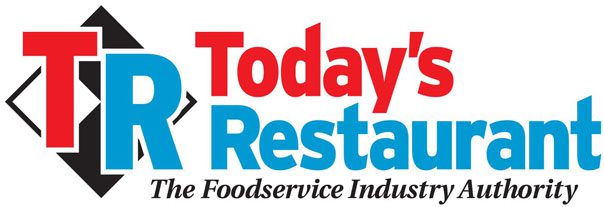
2024 A Great Year for Menu Overhauls
Menu Engineering: Innovating Menus for Profitability and Simplicity
- By Aaron Allen
In the dynamic landscape of the restaurant industry, one of the most critical challenges is striking a balance between offering innovative menu items and maintaining a simplified, navigable menu. This balance is not just about meeting consumer expectations but also about driving profitability and operational efficiency. This is what menu engineering is about.
2024 will be a great year for menu overhauls, not just LTOs. Many restaurants had to trim their menus during COVID and haven’t had a chance yet to make updates or innovate on menu items.
Some of the largest restaurant chains in the U.S. have a consistent cadence when it comes to LTOs. For instance, Red Lobster is introducing an average 1.5 Limited-Time-Offers per week and Krispy Kreme goes at a pace of 1.1 LTOs per week. But others, like Panera, are testing and introducing new permanent items to their menus. This is based on a sample of restaurant chains making changes to their menus in the first ten weeks of 2024.
2024, A Great Year for Menu Overhauls
- Red Lobster innovates at a pace of 1.5 LTOs per week with a 50-50 split between food and beverages
- Krispy Kreme unveils an average of one new item per week (LTOs), mostly food items
- At the beginning of 2024, Panera has been introducing new permanent items into the menu at a pace of 1.1 new items per week
Every great turnaround started with the menu. That’s why menu engineering and new menu launches can’t be relegated to junior teams and need C-suite involvement.
The Case for Menu Engineering and Innovation
Menu engineering is paramount for restaurants to differentiate themselves in a saturated market. Unique and creative dishes can captivate customers’ attention, leading to increased foot traffic and social media buzz. However, the menu innovation must be purposeful; it should reflect the restaurant’s brand identity and core values, thereby enhancing the dining experience and establishing a loyal customer base. Successful examples include restaurants that have introduced fusion cuisines or interactive dining experiences, which not only generate interest but also position the brand as a trendsetter.
The Power of Simplicity
Conversely, menu simplification focuses on refining the selection to the most profitable and popular items, thereby streamlining operations and improving customer decision-making. Data shows that simplified menus lead to higher average sales growth, as they reduce the complexity for the customer and enhance the speed of service. For instance, chains that have reduced their menu items have reported not only faster service times but also an increase in customer satisfaction and repeat visits.
Engineering for Balance
Menu engineering stands at the crossroads of innovation and simplicity, requiring a strategic approach to determine the optimal menu composition. This involves analyzing each item’s profitability and popularity, considering the menu’s layout and visual design, and understanding consumer psychology. High-margin items should be prominently placed in the “Golden Triangle” area of the menu to attract attention, while descriptions should entice the customer without overwhelming them with choices.
Operational Impacts and Considerations
Limited-Service Restaurants introduce new items with a cadence ranging between one new item (either LTOs or permanent) per week to one new item every 10 weeks (based on a sample of nearly 40 chains over the first 10 weeks of 2024). The operational complexity of the new menu items needs to be thoughtfully considered, as they may seriously delay throughput.
Coffee and Snack chains are among the most frequent innovators, with Krispy Kreme, Dutch Bros, Dunkin’, Starbucks, and Tim Hortons leading the pack — especially with a focus on LTOs for beverages. This requires updated and accurate training for baristas and FOH staff that needs to be considered in the investment for developing the new item.
The menu’s design has a direct impact on operational aspects, including kitchen workflow, inventory management, and labor costs. A well-engineered menu can reduce preparation time and waste, optimize the use of ingredients, and require less specialized labor, thereby improving the restaurant’s overall efficiency and profitability.
Menu Engineering Can Deliver Great Returns
Balancing innovation with simplicity in menu design is not a one-time task but a continuous process of adaptation and refinement. Restaurants must remain attuned to market trends and consumer preferences, regularly reviewing and re-engineering their menus to maintain this balance. Achieving this equilibrium is key to enhancing profitability, customer satisfaction, and overall restaurant success.
Optimizing the menu can deliver great returns. When was the last time your brand undertook a menu engineering initiative?
About Aaron Allen & Associates
Aaron Allen & Associates works alongside senior executives of the world’s leading foodservice and hospitality companies to help them solve their most complex challenges and achieve their most ambitious aims. We have helped evaluate and engineer menus for some of the world’s largest restaurant brands, as well as helped restaurant companies around the world drive revenues, increase profits, and enhance the guest experience through improved marketing, messaging, and menu engineering.
Our clients span six continents and 100+ countries, collectively posting more than $300b in revenue. Across 2,000+ engagements, we’ve worked in nearly every geography, category, cuisine, segment, operating model, ownership type, and phase of the business life cycle.
To read more great articles you can use, visit www.trnusa.com





Recent Comments